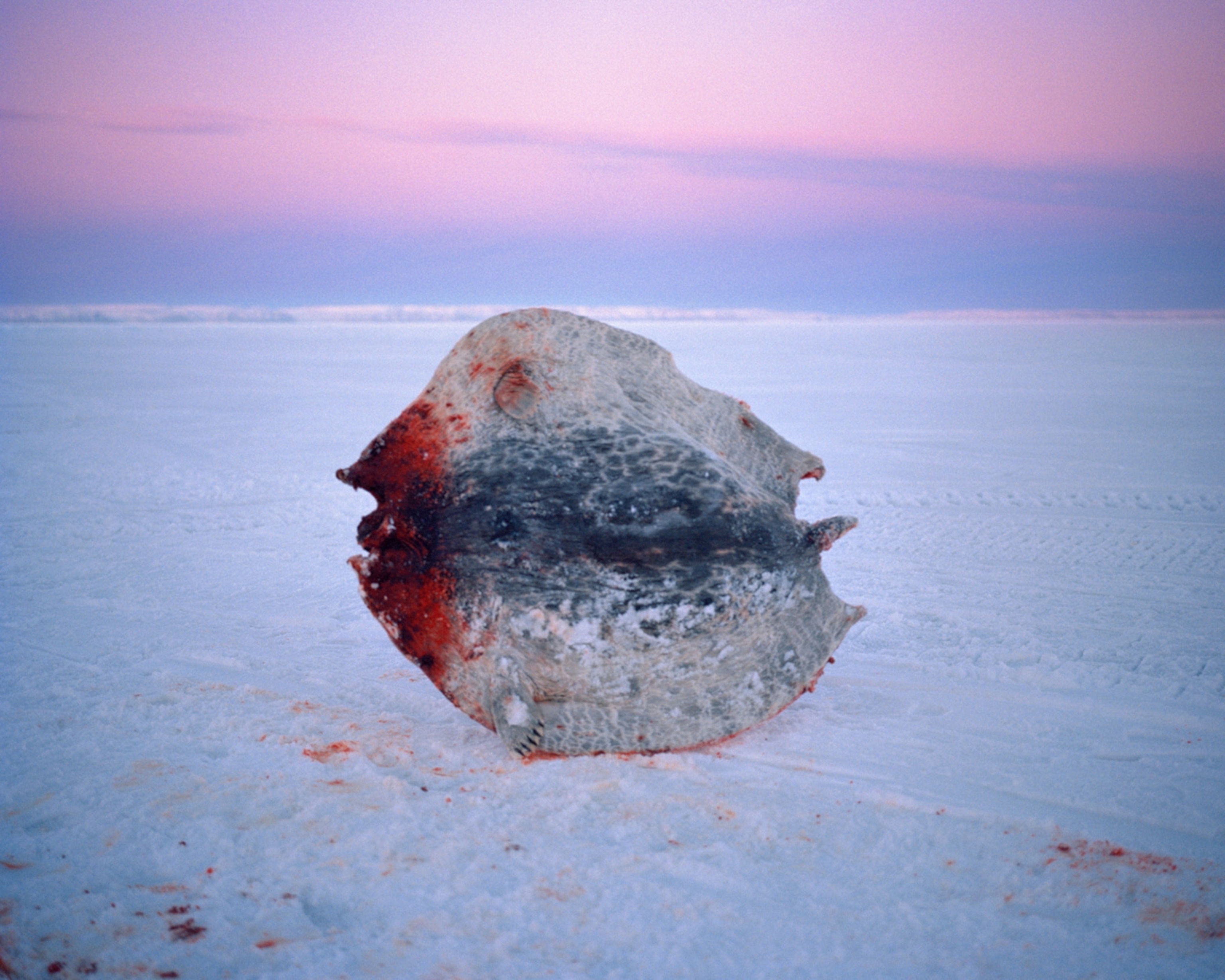












Dreamy Photographs Illuminate Life in Dark Arctic Winters
A photographer’s journey into the Canadian Arctic reveals the vibrancy of life in one of the coldest inhabited regions on the planet.
In early November the sun dips below the horizon in Arctic Bay and the sky bruises violet and blue. The sun won't rise again here for three months, plunging the landscape into infinite twilight.
Amid tundra and sea, Nunavut (“our land” in Inuktitut) is the largest and northernmost territory of Canada, where a majority of the country’s Inuit population cluster in remote coastal communities. Photographer and Fulbright grantee Acacia Johnson embraced one of the coldest and darkest winters on Earth in order to document the Inuit’s evolving relationship with their environment in her dreamlike series, Under the Same Stars.
“The only constant thing about the Arctic landscape is that it’s constantly changing,” Johnson says. “My [original] idea was to do this landscape project … I showed up and the reality is quite different from what you imagine. Instead it seemed more important for me to focus on the cultural transition happening there.”
Over the past 50 years, the Inuit have undergone rapid political, economic, and cultural transformation associated with globalization and the assimilationist policies implemented throughout the 19th century—a new iteration of an old violence experienced by indigenous peoples worldwide.
Within living memory, Inuit were forced to transition from a self-governing, seminomadic people into government settlements where they were stripped of their identities in favor of western acculturation—actions since recognized as abuses of rights, autonomy, and dignity by the Canadian government.
Today, the Inuit continue to navigate the complex relationship between an ancient lifestyle and one that was thrust upon them. Over a period of four months in the North Baffin Island community of Arctic Bay, Johnson sought to celebrate rather than pathologize this emerging way of life through a unique visual approach.
“I’m all about challenging stereotypes of the Arctic. I think a lot of people just imagine it as a white, flat, empty place,” she says. Under the Same Stars, by contrast, reveals a landscape that pulses with life and color in the depth of winter: teenage girls painted by the artificial glow of smartphones, hunters roaming beneath cotton candy-colored skies, and snow blushing with starlight.
“When you don’t see the sun for a long time, your eyes grow more sensitive to light,” Johnson explains. Darkness, traditionally deemed inhospitable to life, actually amplified it. “My perception of the moon and the stars were a lot greater than I was accustomed to—their light was staggering.”
Johnson’s most profound experience, however, was accompanying Inuit on the sea ice during traditional seal hunts. “Hunting, for mostly marine mammals, is the core of their culture,” she says. “But in this region, no animal is as singularly important as the ringed seal.”
Inuit subsistence hunting is distinct from Canada’s widely criticized commercial seal hunt. Indigenous communities have relied on seal hunting for thousands of years as a source of nutrients and clothing. Today, in the face of persistent food insecurity and hyperinflation of imported goods, the traditional seal hunt continues to sustain life amidst economic uncertainty.
“It’s important that we recognize this—the landscape, the richness of the sea, the relationship to the sea ice—is all very much alive and shouldn’t be thought of as primitive or stuck back in time,” Johnson says. “It’s forward moving. It fascinates me.”
While colonization has significantly eroded traditional land-based skills and interrupted the transfer of intergenerational knowledge, indigenous ways of life are also under threat from climate change. Scientists have now confirmed what traditional hunters have witnessed over decades of intimate interaction with the Earth: Arctic ice is melting at an unprecedented rate. Rising temperatures and extreme weather events are expediting coastal degradation and permafrost thaw—conditions that will disproportionately affect the livelihoods and health of indigenous communities who depend on natural resources.
“Everything revolves around the stability of the sea ice. It essentially forms a superhighway between otherwise totally distant regions—it is a facilitator of life,” Johnson says. “I believe the warming climate and the instability of the sea ice is going to drastically impact the people who live here.”
Johnson says her photographs are ultimately a tribute to the adaptability and resilience of the Inuit, qualities she believes will thread people together and guide Nunavut through an unpredictable future—a shared future.
“Even in what seems to be the farthest recesses of the globe in fact we are living on the same planet under the same stars,” Johnson says. “We’re all connected.”
This project was funded by a grant from Fulbright Canada in affiliation with the Ontario College of Art and Design University.




